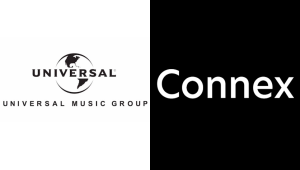Summary
Tamer Tariffs Drive Stock Recovery The stock market has been uncommonly volatile in April. Amid a range of economic and geopolitical cross-currents, the driving force has been tariffs and, even more so, tariff talk. The early days of the month were characterized by sharp selloffs reminiscent of the market crashing toward recession in 2008 or plunging on COVID-19 shutdown fears in 2020. But as the Trump administration has softened its tone on tariffs, the stock market has rallied. Stocks remain far from recapturing year-opening levels and are even further away from establishing new all-time highs. But the recovery has taken some panic out the market. We are now seeing selling days that do not turn into routs, as was the case earlier in April. As of market close on 4/25/25, the S&P 500, at 5,525, was down 6.1% year to date; it was also down 1.5% for April to date. The Nasdaq was down 10.0% and the Dow Jones Industrial Average was down 5.7%. At a closing lows of 4,983 on 4/8/25, and at the height of tariff panic, the S&P 500 was down 15.3% year to date and 18.9% below its all-time closing high of 6,147 from February 2025. At its low near 15,267, the Nasdaq was down 20.9% year to date and 24.4% below its all-time closing high. In addition to a more-moderate pace of tariff implementation and ongoing negotiations with a host of countries, the stock market has also rallied on a reversal from the president regarding the Fed chairman. A week after calling Jerome Powell a ‘major loser’ and saying the central bank was making a mistake by not immediately cutting interest rates, President Trump said he had ‘no intention’ of seeking to fire the Fed chair. Investors believe Treasury secretary Scott Bessent and other administration officials persuaded the president to back down by citing rapid deterioration in the Treasury market and in the U.S. dollar. Yet investors are not celebrating the comeback in stocks. The market bravado of 2024 appears to be completely gone. Institutional investors who were inclined to buy every dip in the 2023-24 timeframe now seem trigger-ready to sell every rally. Currently, key tariff negotiations are underway with Japan, India, and other nations. By many accounts, any negotiations with China are at the lowest level or are nonexistent. The outcome of the elections in Canada suggest an anti-American tone from our northern neighbor. Events of that type, or a stray posting from the president on Truth Social, could knock the market back down toward its lows. Sectors in 2Q25: Growth Returns Assuming the rally since mid-April does hold up, the market is showing very different sector leadership in 2Q25 compared with 1Q25. During the first quarter, the best-performing sectors were defensive, rate sensitive, and/or provided inflation protection. Winning sectors in 1Q25 included Energy, Utilities, Consumer Staples, Healthcare, and Materials. The worst first-quarter sectors were Information Technology, Consumer Discretionary and Communication Services. These three sectors led the market in 2023 and 2024. They also tend to offer the best growth prospects and apparently have become attractive to investors on weakness. The best-performing sectors in 2Q25 to date are Utilities and Information Technology. Consumer Discretionary and Consumer Staples are also fractionally positive. No other sectors are positive as of late April. Energy, the first-quarter winner, has unwound its 8% gain for 1Q and is down almost 11% for 2Q25 as energy prices continue to sink. Healthcare has also given back its first-quarter gain and is down about 4% for 2Q25 as of late April, with leading health insurers getting crushed. Weakness in growth sectors in 1Q25 and weakness in defensive, rate-sensitive, cyclical, and inflation-protection sectors in 2Q25 results in just four sectors being positive for the 2025 trading year to date: Utilities (up almost 4%), Consumer Staples (up 2.5%), Healthcare (up 0.75%), and Real Estate (up 0.35). The remaining sectors are all negative year to date. Thanks to its April bounce-back, Information Technology is no longer 2025’s worst sector. That distinction belongs to Consumer Discretionary. Discretionary also had a poor start to 2024, deeply lagging the broad market in 1Q24 and 2Q24. It bounced higher in the third and fourth quarters last year on hopes that the Fed’s newly launched rate-cutting campaign would reduce financing costs and stimulate big-ticket purchases. The sector has weakened this year on fears that tariffs would cause costs and prices on big-ticket items to balloon. Expensive items such as vehicles, homes, and appliances tend to be built with parts and components sourced from all over the world via highly complex supply chains. Forecasting the final costs and prices for such items is impossible when the tariff landscape is changing every day. If half or more of the 11 sectors were to push into positive territory, it would be hugely positive for a broad market reversal. Earnings Update The 1Q25 earnings scorecard has improved meaningfully over the past week. The blended EPS growth estimates from FactSet, Refinitiv, and Bloomberg have all ticked 300 to 400 basis points higher than they were at the end of the first week of 1Q25 earnings, as upside surprises displace conservative estimates in the blended tally. With a little over one-third (36%) of component companies having reported, FactSet is now estimating a 10.1% blended growth rate for S&P 500 earnings from continuing operations for 1Q25. That is up from 7% a week earlier, when just 12% of companies had reported 1Q results. Refinitiv is estimating 10.9% EPS growth on a blended basis, while Bloomberg is right around 10%; both were in the 7%-8% range a week earlier. About 73% of companies to date have surpassed Street expectations; a week ago, that percentage was closer to 70%. On a long-term basis (past 10 years), about three-quarters of companies reporting EPS growth have surprised to the upside. Additionally, the magnitude of the EPS beat jumped meaningfully higher, to 10% (with 36% of companies having reported) from 6% (with 12% of companies having reported). That is better than the 7% long-term average and now also better than the 9% intermediate-term average. Several large and notable Communication Services component companies – Alphabet, Netflix, and Comcast – have delivered strong upside EPS surprises and are responsible for much of the cumulative increase. Six or seven sectors are reporting positive 1Q25 EPS growth, and four or five sectors are posting year-over-year declines. [The different agencies using slightly different metrics, explaining the discrepancy in earnings measurement.] All the earnings compiling agencies agree that Energy has had the worst EPS performance for 1Q25 season to date, with a high-teens decline. Hopes that Energy w








